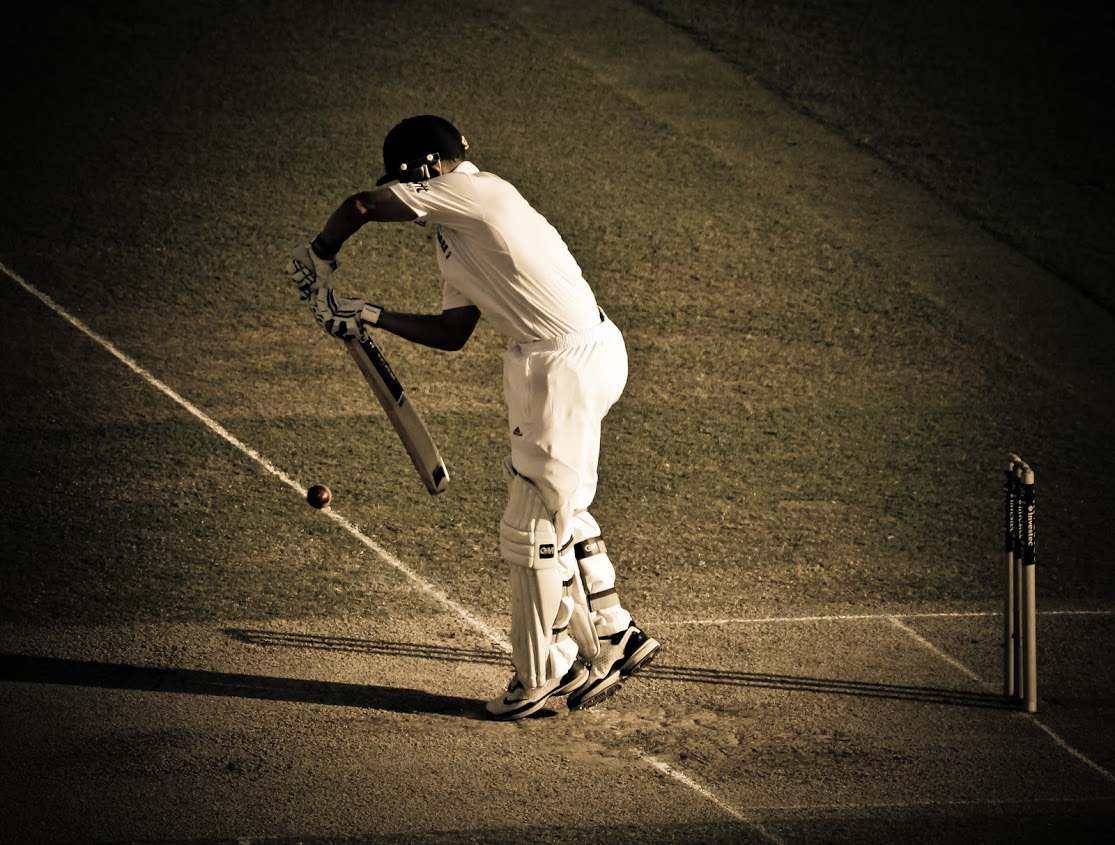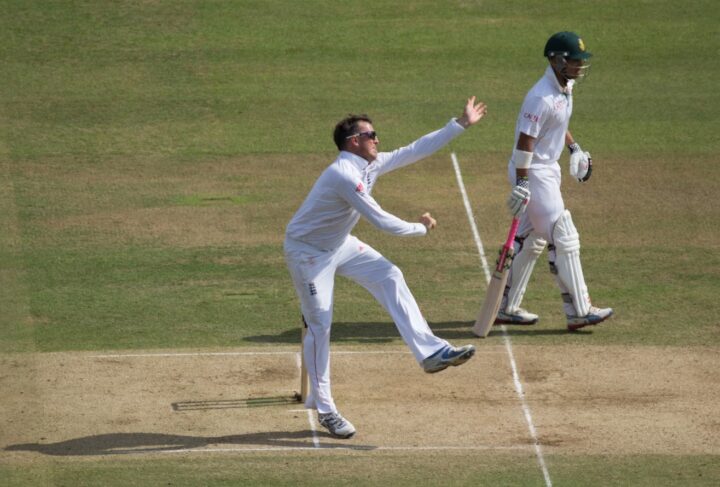Last week I received an email from Simon Cousins, an Australian Kent fan living in Sydney. We got chatting about the Big Bash and whether Harrison’s Harebrained Have A Hit would be a success. Simon’s responses were so detailed and enlightening that I felt compelled to share them. He makes some very good points. Here’s what he had to say …
Much is made by supporters of the new ECB T20 city-based tournament of the success of the Australian Big Bash. Unfortunately, however, they often use misleading statistics.
Comparing attendances between the current county T20 tournament and the Big Bash is futile. All the Australian Big Bash games are played at massive capital city stadiums. Most of the county games are played at much smaller provincial county headquarters. A better measure, if available, would be the attendances as a percentage of stadium capacities.
Although many claim that the Big Bash is thriving in Australia without hurting test cricket, I’m not so sure. And I say this as a resident of Sydney. For starters, I’m not convinced that attendances and television viewing figures for test cricket are holding up. After doing some research I discovered that figures can be used to show two very contrasting stories – that test cricket down under is both declining and in rude health. It depends what evidence one looks for.
Many argue that viewing figures for test cricket have held up well since the Big Bash was introduced. However, these statistics are boosted significantly by Ashes series (Aussies love nothing more than watching their cricketers whitewash the Poms) plus one-off events like day/night tests. But will the novelty value of these occasions last?
I’m also not convinced that the Big Bash has led to a renewed love affair with cricket in Australia, nor that a similar model would work in the UK. The Big Bash has an advantage that no similar English competition could ever enjoy – it’s shown exclusively on free to air television (not just a few token games). It’s therefore accessible to practically every home in the country.
What’s more, the Big Bash is also played during the long summer holiday. At that time of year, Australian broadcasters traditionally do not show high-rating television programmes. Big Bash cricket is therefore largely unchallenged as the choice of evening entertainment for families across the nation – at least until the Australian Open tennis starts in mid-January. Broadcaster Channel 10 makes the most of this, with levels of promotion both before and during the tournament which mean that few people in the country cannot be aware that it is taking place.
There is no such television shutdown during the English summer that would allow T20 cricket to be the nation’s unchallenged favourite entertainment. Indeed, in early August, right when an English T20 tournament would be reaching its climax, the behemoth that is the Premier League returns from its three-month break, crushing all rival sports.
I’m also not sure whether the Big Bash is a true sporting competition. At times it’s more like exhibition cricket. I know people who attended a match but were unable to tell me the next morning which team won. I wonder whether a majority of Australian cricket ‘tragics’ could actually tell you who won the last edition of the Big Bash. The tournament is almost a holiday tradition, in the same way that secular societies sing Christmas carols with gusto: it’s all good fun but there’s no real meaning behind it. People watch the Big Bash but do they really develop a passion and a deeper affinity for the game?
Perhaps I could summarise my feelings thus: I can walk to the shops and see people wearing rugby league, Australian Rules and even football shirts. But I’ve never seen anyone outside a stadium wearing a replica T20 top. After all, how can anyone develop an affection for a team that exists for just six weeks every year and whose personnel transform from one year to the next? At least a county T20 tournament can build on existing loyalties.
Finally, the geographic differences between Australia and England are significant. The majority of the Australian population lives within one hour of the vast capital city stadiums which host Big Bash games. A much smaller population lives within a similar catchment area of England’s (less sizeable) test grounds. Cricket supporters outside the major English cities will therefore be deprived of live top quality T20 cricket when the city-based tournament starts. How is this going to grow the game?
Having said all the above, there is much to learn from the success of the Big Bash in Australia. Low ticket prices combined with free to air television coverage have introduced cricket to new audiences. Cricket Australia has shrewdly capitalised on this with programmes to get youngsters involved in the game that are already bearing fruit, particularly amongst girls who may be inspired by the excellent Women’s Big Bash.
I just wish that administrators around the world would put as much effort into promoting test cricket as T20 cricket. In January of this year, Cricket Australia made entry free for the final day of the Sydney test match. They expected such a low crowd that only one side of the ground was opened. By midday they were so overwhelmed by families coming in (including mine) that the entire ground had to be opened.
With kids’ entertainment all around the SCG, the atmosphere was fantastic. Whatever revenue was lost from ticket sales was, I am fairly confident, offset by sale of merchandise. Surely that shows that there is a demand for test cricket across all demographics that administrators need to tap in to?
Simon Cousins









Very good observations Simon.. the article is right in every way and hits the nail on the head especially regarding the fact that Premier League can never be rivaled in England. And I agree that BBL is a huge success but the quality of test cricket does look to be on the decline down under. For example, I could have never imagined the mountains of runs being scored at the WACA for the past 5 years, the pitches are so batting friendly that there is no contest left between bat and ball. Who would come to see such a test in the scorching heat of Australian summer?
Very interesting. “Have-a-Hit-UK” is a hair brained idea. Thanks for your excellent input.
Big bash style is the future, as we live, as kerrang puts it so succinctly, in a ‘life is loud’ society, particularly for the young. To promote test cricket, where people have to sit still for hours on end, without much obvious entertainment, unless you are a committed supporter of one team or an advocate of the niceties of the game, which most, even those attending, are not, confirmed by the increasing tendency towards drink related behaviour at the grounds, is next to impossible on a grand scale. I don’t hear the players moaning about the increased exposure of the white ball game. Most of them are young and part of the ‘problem’. Look at the recent debacle after the Bristol 1-dayer, where Stokes and Hales were the tip of the iceberg. We can’t celebrate anything nowadays without a central core of liquor, and our increasingly additive based diet leaves us less resistant to its effects.
The modern lifestyle is increasingly reactive, so to me it is remarkable that test cricket survives atall. Forget the geographical and logistical issues, Big Bash will be marketed as a family day out, along with other sideshows. I have little doubt sponsors will flock to it like flies around shit and I have no doubt it will be successful initially. The only dampener, if you’ll pardon the pun, is our good old British summer.
I am not an advocate of any of the above and lament the demise of test cricket’s importance, but I am a realist.
No other sport has been messed with so much to find continued support in an increasingly competitive environment.
Big bash cricket is not really any more popular than the nwb, despite being far better promoted and marketed. It’s certainly far less successful financially, making a loss whereby the nwb makes a big profit
Good post and “….. fun but there’s no real meaning behind it” sums T20 cricket up pretty well imo.
The existing T20 competition here could easily be tweaked …family stands etc for new audiences and so why do we need a second one? Money from TV rights which ultimately comes from the sub-continent?? And/or Aus I suppose, but for the ECB and its cheerleaders to restructure English cricket on that basis seems poor, if so.
I cannot really add anything to a very good post, but feel I should bring attention to one more malign effect of the obsession with white ball cricket.
I play in the Fullers Surrey County League. Recently I attended the league meeting on behalf of my club. The meeting was dominated by a discussion of the merits of moving from a league programme of half and half timed games and limited over games, to a purely limited over format. This was especially pushed by an aggressive cadre of young representatives, with suggestions of reducing the overs to 40 (from 45) and ultimately becoming a 20/20 league to encourage colts and those with young families. When it was pointed out that this removes the draw option, which many find produces the most interesting games, it was met with derision from a small minority. Having played in a timed game which set a league record of 637 runs (341 declared, 296/7), and only this year having taken great joy in batting out the last 12 overs of a game when the opponents brought their 1st team opening bowler to a 3rds game (he tried to bounce us out), I can safely say these games gave more pleasure than any limited over game I recall.
Whilst the effect of T20 on professional red ball cricket is often remarked, the effect on local league cricket is building and I forecast a time when club cricket will be predominantly T20 unless a line is drawn in the sand.
This is exactly what I think. The sad effect of limited overs is having a massive effect on amateurs as it is on red ball/test cricket. For the worse too
Having played in Birmingham league cricket in the 1970’s and 1980’s, where the draw option was regularly used as a tactic by sides preparing feather bed wickets to ensure they couldn’t lose, I welcome the chance of a result each week. The alternative was a convoluted bonus points system that developed as a result of this negativity. Amateur league cricket should be a straight forward and enjoyable afternoon, even at league level, where everyone knows it’s win or lose. The amount of tactical discussion I had to sit through before and during the game was ludicrous. There were many occasions when restricting run rate became important than taking wickets, especially towards the end of the season, in order to sabotage a rival game’s result, with spies sent to watch these games and phone in reports regularly, so we could keep tabs on the state of games as they were progressing. These were not isolated incidents, but par for the course.
40 or 50 over games with bowling restrictions, so it is more of a fair fight. Then it becomes more difficult to win a game using a bowler drafted in to terrify the opposition, or with pitches prepared for the ‘star’ performer. League cricket is based on local rivalries more potent than county ones, so there needs to be some regulation to offset the effects of this. It is easier to do this with limited overs.
I also played in the Birmingham area in the 1970s (I come from Birmingham and played for KE Five Ways OE before I went to uni and in vacations). I do not recognise any of the issues you mention from that time. I also played 1st team cricket in the Three Counties league and Hampshire League in the 80s and early 90s, both of which were a very decent standard and would expect to show such problems – but did not. I can only assume you were playing in the Birmingham League if you came across wickets prepared for star performers. That league, which was probably the best in the country for 10-20 years, was packed with old 1st class players, including test players, and had grounds (such as M&B) with full time ground staff who could doctor a wicket. Most teams then, and now, do not have such stars or ground staff and are not able to prepare doctored wickets. And, in case you think my experience is at a very low level, the OE’s in the 70s had a seamer who was offered a Warwickshire contract and there were a number of minor counties players in the Three Counties and Hampshire leagues.
I have no problem with limited overs, provided it is a sensible length (45 overs or more) and I agree with over limits for bowlers, whether in limited over or timed games, as no one wants to see two seamers wheeling away for 20 overs each. But remove the draw option and you change the game fundamentally. As for it is harder to use ringers to win limited over games – you must be joking. It is easier, as they know that they just have to control the game rather than bowl out a side.
Interesting observations but doesn’t address the point about team identification i.e. who are the supporters? In Lancashire there has been much vitriol poured on the franchise plan if the team was to have Manchester in its name. Due to the savage football-led tribalism in these parts Manchester is seen as the big baddie. That is unlikely to happen and I imagine , without consultation, the authorities will settle on Red Rose Marauders or whatever. The question then is will the franchise team have the same support as the Lancashire Lightning. Will people afford to go to both or pick and choose? As it stands, it\s a bit of a mess. If the Lightning team fixtures are farmed out to the outgrounds it’s something I might support. Or actually even if it was based somewhere else and called say Liverpool Lightning. I quite like that.